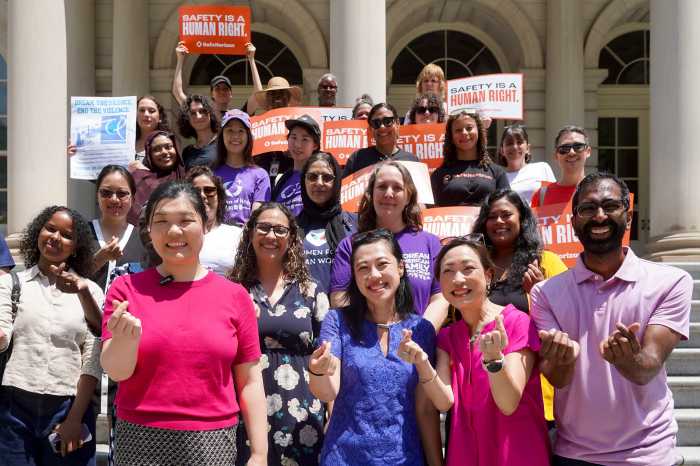By Courtney Dentch
For months at a time Arnita Fowler is a tech sergeant with the U.S. Air Force, helping track wounded servicemen and women being treated at a military hospital in Germany.When she returns home on leave, she is a crusader working to change the way the police handle missing persons cases after her 21-year-old son disappeared in 1995 and was buried in an unmarked grave in Potter's Field for three years.”It's hard to have a voice, live a normal life and pursue a situation like this,” she said. “I use the opportunity to decompress and refocus while I'm gone. It works to my benefit.”Fowler, who has been in the Air Force Reserves for 20 years and has been actively deployed since the Sept. 11 attack, is working with state legislators to change the age restrictions on missing persons cases.The age restrictions require police to conduct investigations of missing persons only if the person who has disappeared is under 19 or older than 64. In other words, police do not have to investigate the disappearance of those between 19 and 64 unless foul play is suspected.”What I would be satisfied with is doing it on a case-by-case basis instead of just looking at the age,” she said. “You need to look at the details.”Fowler's son, La Mont Dottin, 21, was a Queens College student when he left his grandmother's Hollis home on Oct. 17, 1995 to mail a package, Fowler said. The package reached its destination, but his family never saw him again and it took them 13 days before the police would even list him as missing, Fowler said.Dottin's body washed up on the shore along the East River six days after he left his grandmother's house, she said. He was classified as unidentified and was held in the morgue in Manhattan for four months before he was buried in an unmarked grave in Potter's Field on Hart Island.”This was the most trying time in my life and he was laying in the morgue,” Fowler said. “I cannot get over how my son lay there for four months.”Although the New York Police Department found Dottin days after his October 1995 disappearance and the FBI later identified his body, neither the federal agency nor the local police exchanged information on the case until August 1999. By then, the remains of the missing man had been buried in an unmarked grave for three years.”It should be so simplistic,” Fowler said. “If I make a report it goes to all the precincts and it goes to the Department of Health so when they issue a death certificate everyone is notified.”As part of the state legislation, dubbed the “La Mont Dottin” bill, Fowler is also pushing to create a standard way for the city, state and federal law enforcement agencies to exchange information, she said.The bill was sponsored by Assemblyman William Scarborough (D-St. Albans) and state Sen. Malcolm Smith (D-St. Albans). The bill passed the Assembly last year, Scarborough said, but the Senate has not voted on it due to monetary concerns about implementing the reforms, Smith said.”We'll have to try, try again,” Scarborough said.In the Reserves Fowler works as a chief medical administrator, leading a team of 12 to 15 people to track patients wounded in combat, she said.”I'm held accountable to know where everyone is at all times,” she said. “It's all tied together. Everything I learned looking for my son helped me track people for the military.”Working in the military has allowed Fowler to take the time to fight for the missing persons changes, but it has also kept her away from Albany and out of the country for long periods of time, she said.”You feel like your life is not your own until this is resolved,” Fowler said. “I keep feeling my son telling me it's not over yet.”Reach reporter Courtney Dentch by e-mail at news@timesledger.com or by phone at 718-229-0300, Ext. 138.



































